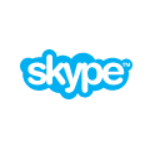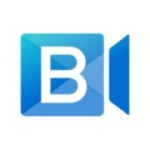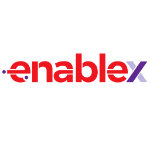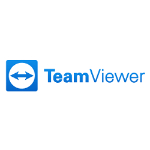TechnologyCounter provides genuine, unbiased real user reviews to help buyers make informed decisions. We may earn a referral fee when you purchase through our links, at no extra cost to you.
List of 15 Best Screen Sharing Software
Showing 1 - 15 of 44 productsZoho Meeting is a secure online meeting platform and webinar solution that helps you connect, collaborate, and work remotely with efficacy. Schedule online meetings, stream live webinars, and enhance your remote collaboration experience with our high...Read Zoho Meeting Reviews
Google Meet is a video conferencing platform that allows individuals, teams, and organizations to connect and collaborate from anywhere. With its user-friendly interface, seamless integration with other Google tools, performance, Google Meet is the i...Read Google Meet Reviews
Skype is a reliable and user-friendly communication platform that connects you with loved ones, colleagues, and clients all around the world. With its seamless video and voice calling features, instant messaging, and screen sharing, Skype makes stayi...Read Skype Reviews
CrankWheel is a virtual meeting solution designed to revolutionize the way you connect with your clients and colleagues. With its user-friendly interface and seamless integration, CrankWheel streamlines virtual meetings and presentations, making them...Read CrankWheel Reviews
BlueJeans is a and versatile video conferencing platform that allows teams to connect, collaborate, and communicate seamlessly. With features such as HD video, screen sharing, and live chat, BlueJeans makes remote meetings and virtual events feel as...Read BlueJeans Reviews
ISL Light Remote Desktop is a is a remote desktop software that allows you to access and control your desktop from anywhere in the world. With its advanced features and user-friendly interface, ISL Light makes remote work effortless and secure, enhan...Read ISL Light Remote Desktop Reviews
EnableX offers unique and advanced Video Communication and Collaboration solutions, designed to enhance connectivity for your remote team members, students, or clientele. By utilizing our platform, individuals are able to maintain seamless contact a...Read EnableX Video Meeting Reviews
Demodesk is a sales enablement platform designed to revolutionize the way you conduct virtual meetings. Say goodbye to traditional screen sharing and hello to interactive and collaborative presentations. With Demodesk, you can finally create engaging...Read Demodesk Reviews
AtomChat, the ultimate communication tool for businesses and individuals. With its user-friendly interface and powerful features, AtomChat streamlines communication processes and enhances interactions on all levels. Say goodbye to complicated communi...Read AtomChat Reviews
Virola Messenger is a communication tool designed to simplify and enhance your messaging experience. With its user-friendly interface features, Virola Messenger allows you to connect and stay in touch with friends, family, and colleagues effortlessly...Read Virola Messenger Reviews
Co-browsing, the innovative software that allows for real-time collaboration between users and agents. With Co-browsing, gone are the days of screen sharing and back-and-forth communication. This convenient and user-friendly tool simplifies the proce...Read Co-browsing Reviews
ZOOM is a tool for seamless video conferencing, allowing you to connect with your team, friends, and family no matter where you are. With its intuitive interface features, ZOOM provides the perfect solution for efficient remote communication. Say goo...Read ZOOM Reviews
GoToMeeting is an innovative web conferencing software that allows teams to collaborate and connect in real-time, no matter where they are located. With its easy-to-use interface features, GoToMeeting is the ideal solution for businesses looking to s...Read GoToMeeting Reviews
TeamViewer is a and innovative remote access software that allows you to remotely access computers and servers, collaborate with colleagues, and provide remote support to clients from anywhere in the world. With a user-friendly interface performance,...Read TeamViewer Reviews
Mikogo the perfect solution for efficient and seamless online collaboration. With its user-friendly interface features, Mikogo allows you to effortlessly connect with clients, colleagues, and friends from anywhere in the world. Enhance productivity,...Read Mikogo Reviews
- What Is Screen Sharing Software?
- Top Reasons Why Businesses Need Screen Sharing Software?
- What Are the Top Key Features of Screen Sharing Software?
- What Are the Top Benefits of Screen Sharing Software?
- What Are the Steps to Choose the Right Screen Sharing Software?
- What Are the Types of Screen Sharing Software for Different Industries?
- What Are the Technology Trends for Best Screen Sharing Software?
- What Are the Deployment Options for Screen Sharing Software?
What Is Screen Sharing Software?
Screen-sharing software is a technological tool that facilitates remote access to the content of one computer from another computer. This software exhibits significant utility across diverse contexts, including webinars, online conferencing, online tutoring, and providing technical assistance to acquaintances in resolving computer-related issues.
For effective screen sharing to occur, it is imperative that both users employ identical software desktop sharing, hence ensuring synchronization and alignment between the two parties. In order to initiate a screen-sharing session, it is necessary for the user who intends to share their screen to install the requisite software on their computer.
After installation, users have the capability to transmit a hyperlink to another user, enabling them to participate in the session. To initiate the screen-sharing session, the recipient simply needs to click on the provided hyperlink, which will promptly redirect them to the designated interface.
Subsequently, the user who is actively sharing their screen possesses complete autonomy in determining the content they choose to share. Users have the option to share either their entire desktop or certain applications.
In addition, individuals have the option to share audio or video content. During the session, participants have the opportunity to engage in real-time collaboration and communication through several mediums such as text-based messaging, audio-based interactions, or video-based conversations. Top screen-sharing software can also serve the purpose of facilitating file transfer between parties or delivering presentations to an audience located remotely.
In general, the best screen-sharing software is a highly effective tool for facilitating collaborative work and facilitating remote communication. It becomes advantageous when two individuals are required to establish a connection and collaborate, despite their physical separation.
Top Reasons Why Businesses Need Screen Sharing Software?
1. Facilitate remote collaboration from anywhere: The utilization of top screen-sharing software facilitates remote collaboration across teams, hence obviating the necessity for co-location.
2. Save money on travel expenses: The utilization of screen-sharing technology mitigates the necessity for physical gatherings, resulting in decreased travel costs and diminished ecological footprints.
3. Streamline communication: The utilization of screen sharing facilitates enhanced communication and heightened efficiency.
4. Share presentations: The best screen-sharing software facilitates the exchange of presentations and other documents among teams, thereby expediting the dissemination of ideas and information.
5. Make online conferences more interactive: The utilization of the best screen-sharing software facilitates the provision of a visual perspective to conference participants, enabling them to engage in real-time interaction with the presenter.
6. Removes hardware constraints: The utilization of multiple screen-sharing software does not necessitate the installation of supplementary hardware or software on one's machine, hence rendering it a user-friendly and economically efficient solution.
7. Reduce training costs: The utilization of screen sharing facilitates instantaneous feedback during instructional sessions, simplifying the process of illustrating a concept and diminishing the expenses associated with training.
8. Improve customer support: Top screen-sharing software is utilized to deliver technical help or customer care remotely.
9. Gather feedback: Remote screen-sharing software facilitates the prompt acquisition of valuable input from consumers or team members, enabling swift adjustments to be made, if necessary.
10. Conduct remote interviews: The utilization of screen-sharing software facilitates the facilitation of remote interviews with job hopefuls, hence expanding the scope of available talent.
11. Ensure security: Numerous screen-sharing software options offer an added level of protection, thereby safeguarding data against unauthorized access.
12. Generate accurate reports: The utilization of multiple screen-sharing software facilitates the production of comprehensive and precise reports, so enabling the monitoring of progress and the enhancement of decision-making capabilities.
13. Monitor live online activity: Screen-sharing software is a valuable tool that enables the real-time monitoring of team members' online activities, thereby ensuring their adherence to assigned tasks and successful goal attainment.
14. Demonstrate a product: The utilization of screen sharing facilitates the demonstration of a product in a manner that is characterized by increased interactivity and engagement.
15. Get real-time feedback: The utilization of remote screen-sharing software facilitates the expeditious acquisition of input from clients or team members about a concept or product, prior to its official introduction, so conferring a competitive advantage.
What Are the Top Key Features of Screen Sharing Software?
The top key features of the best screen-sharing software include:
1. Remote Access: This feature enables users to securely access their computer remotely and engage in efficient collaboration with colleagues or peers.
2. Easy File Transfer: This functionality enables users to efficiently and securely transfer sizable files across remote systems.
3. Security: Numerous top screen-sharing software employ sophisticated encryption techniques and robust data transfer protocols to safeguard the privacy and security of users' data.
4. File Sharing: This functionality enables users to efficiently and securely distribute data across networks, hence obviating the necessity of sending large files via email.
5. Collaboration Tools: Numerous screen-sharing solutions are equipped with supplementary collaboration features, including voice and video conferencing, whiteboard and text annotation functionalities, as well as chat capabilities.
6. Monitor Sharing: This functionality enables concurrent access by several users to a shared monitor, hence optimizing remote collaboration procedures.
7. Screen Recording: This functionality allows users to capture screen images and record the full session for future utilization.
8. Customization: Numerous software desktop sharing provides users with the ability to customize various aspects such as layouts, themes, and user settings.
What Are the Top Benefits of Screen Sharing Software?
1. Reduced Travel Costs: The utilization of the best screen-sharing software obviates the necessity for employees to engage in travel to attend meetings or conferences, hence resulting in the conservation of both time and financial resources.
2. Increased Collaboration: The utilization of the best remote screen sharing software facilitates seamless collaboration among diverse teams, irrespective of their geographical dispersion, by granting them simultaneous access to shared documents or presentations.
3. Improved Communication: The utilization of top screen sharing software technology facilitates enhanced communication among geographically dispersed teams by enabling instantaneous access to documents and facilitating discussions in real-time.
4. Increased Productivity: The utilization of screen-sharing technology improves efficiency by eliminating the necessity of reformatting documents for email transmission since it enables remote access to papers and presentations.
5. Enhanced Problem-Solving: Software desktop sharing facilitates expedited problem resolution for teams by enabling real-time communication and troubleshooting capabilities.
6. Increased Mobility: Users have the convenience of accessing shared screens without the requirement of installing additional software, hence enabling access from any location and at any time.
7. Integration with Other Software: The integration of remote screen sharing software with other applications facilitates the seamless sharing of papers and presentations, eliminating the need for manual reformatting.
What Are the Steps to Choose the Right Screen Sharing Software?
Step 1: Identify and assess your requirements. Consideration should be given to the allocation of financial resources, the intended utilization of the software, and the necessary compatibility with pre-existing systems.
Step 2: Conduct a comprehensive investigation to choose the most suitable the best screen-sharing software for your needs. Examine evaluations of diverse software alternatives in order to enhance comprehension of the essential qualities and the respective offerings of each choice.
Step 3: Conduct a trial of the software. After reducing the scope of your search, it is advisable to allocate some time to personally evaluate the product through a demonstration. This will enable users to assess the degree of user-friendliness and ease of workflow.
Step 4: Conduct a comparative analysis of prices. Upon conducting software testing, it is important to undertake a comparative analysis of the costs associated with various versions. One should strive to avoid excessive expenditure on features that are unnecessary or unlikely to be utilized.
Step 5: Make a decision regarding the appropriate software. After completing these processes, it is now appropriate to determine the most suitable top screen-sharing software for both you and your team. Ensure that it aligns with all of your requirements and financial constraints.
What Are the Types of Screen Sharing Software for Different Industries?
Numerous screen-sharing software options are accessible to cater to the diverse requirements of various businesses.
The types of the best screen-sharing software available generally fall into the following categories:
1. Desktop Sharing: This particular software facilitates the dissemination of a user's complete computer screen to one or more additional users. This technology finds use across several industries, including but not limited to remote support, software development and training, educational and tutorial programs, and video conferencing.
2. Web Conferencing: Web conferencing software enables synchronous cooperation and communication among users situated in diverse geographical areas. This technology has the potential to be utilized in various virtual settings such as webinars, meetings, lectures, and other similar activities. The software generally comprises user-friendly features such as desktop sharing, application sharing, document sharing, and voice or video conferencing.
3. Collaborative Drawing: This particular software is specifically built to facilitate the real-time sharing of graphic concepts. This tool has the potential to be utilized in various domains such as ideation, creative design processes, and instructional purposes. Commonly seen elements in this context encompass storyboarding, whiteboard functionality, and annotation tools.
4. File Transfer: File transfer tools offer a convenient means of transmitting and distributing many types of information, including papers, photographs, and audiovisual content, among a multitude of users. This particular tool has frequent application within several areas, including marketing, law, and finance.
5. Presentation Software: This particular program facilitates users in the creation and delivery of compelling multimedia content derived from many sources and platforms. It is frequently employed in sectors such as education and healthcare.
In general, there exists a diverse array of top screen-sharing software that cater to the requirements of various businesses.
What Are the Technology Trends for Best Screen Sharing Software?
The technology trends for the best screen-sharing software are as follows:
1. Security: In order to guarantee secure file transfer and user authentication, it is imperative for the top screen-sharing software to have the most up-to-date security methods. The recommended protocols should encompass AES-256 encryption and additional security features that adhere to industry standards.
2. Cloud Capabilities: The utilization of cloud-based top screen-sharing software is experiencing a surge in popularity mostly because of its cost-effectiveness and capacity to scale. Cloud-based solutions facilitate remote collaboration and enable teams to remotely access files.
3. Video Conferencing Support: Numerous screen-sharing software options offer users the ability to share files, while also offering seamless interaction with prominent video conferencing platforms like Skype, Zoom, and GoToMeeting.
4. Cross-Platform Support: The optimal screen-sharing solutions should possess compatibility with both mobile and desktop devices, accommodating a wide range of operating systems.
5. Ease of Use: The prioritization of user experience should be a primary consideration in the development of optimal screen-sharing solutions. The software ought to possess an intuitive and user-friendly nature, accompanied by a contemporary and user-friendly user interface.
6. Automation & Workflows: The provision of automated top screen-sharing and workflow procedures should be a feature offered by the most effective screen-sharing software. The customization of automated processes is essential to enable users to optimize workflows and reduce the need for manual intervention.
What Are the Deployment Options for Screen Sharing Software?
Screen-sharing software deployment choices are typically categorized into three main groups: cloud-based, on-premise, and hybrid. Cloud-based top screen sharing software, also known as Software as a Service (SaaS), is implemented and administered through internet connectivity, wherein users commonly remunerate a recurring monthly or annual cost.
One primary benefit of utilizing cloud-based the best screen-sharing software is its minimal set-up requirements and high scalability, which can be adjusted according to the magnitude of the user population. The deployment and hosting of remote screen-sharing software on the user's internal network are referred to as on-premise multiple screen-sharing software.
This feature enables enhanced management of the software's configuration, providing a wider range of customizable choices. One potential drawback is that with the expansion of the user base, there arises a need for additional hardware resources to adequately meet the increasing demand.
A hybrid remote screen-sharing software encompasses a blend of cloud-based and on-premise elements. This deployment model involves the hosting of certain services on the user's network, while others are distributed in the cloud.
Hybrid solutions provide users the opportunity to leverage the scalability inherent in cloud-based solutions, while also retaining control over their on-premise infrastructure.















